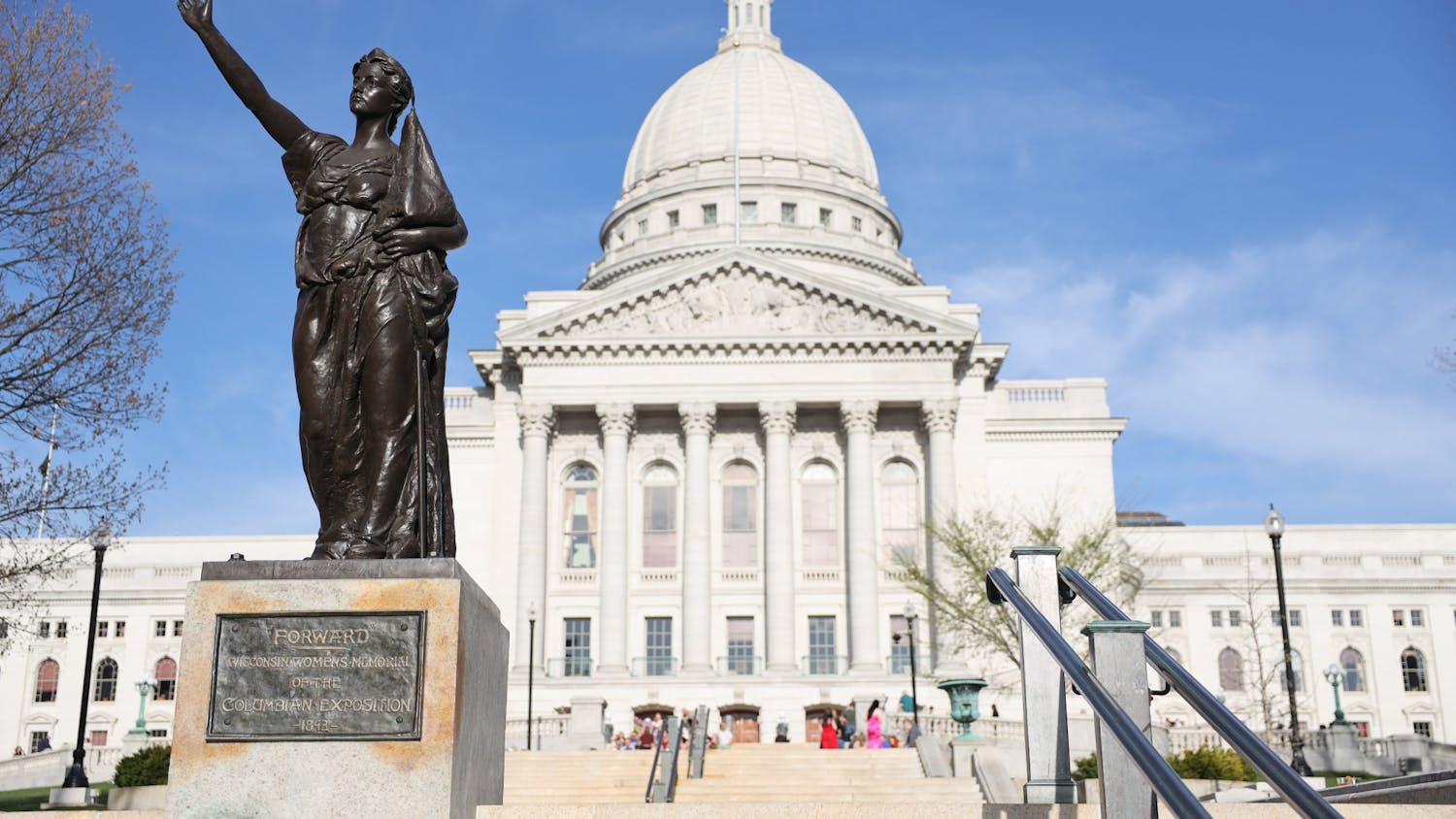The moment a 12-year-old girl approached artist Isha Camara to tell her the color she painted onto a board covering an Overture Center window was her favorite shade, Carolina blue, Camara knew her intended contribution to the State Street Mural Project was realized.
Camara is a fourth-year student at the University of Wisconsin-Madison. Although the university is interested in helping students connect to activism through artwork in her First Wave program, Camara does not call herself an activist because she believes the fight for social justice is a “human condition.”
“People can call me an activist if they want to but I don’t think my work is [activism] because my work is self-indulgent,” Camara said. “My work is a part of my person, it’s an extension of myself.”
Amidst the power and intensity coming from the Black Lives Matter movement and tragic events fueling it, Camara recognized a need for public awareness and commitment to the process of grieving and healing. She says this recognition is critical for sustaining a lasting commitment to social change. In fact, Camara’s concept of recognition of self-love in the revolution is so radical that the message is frequently lost on her peers.
“When everyone feels this sense of urgency, where everyone is putting out these really important messages … sometimes it’s really hard to find a place for your art because it’s not seen as that important message,” Camara said.
As a poet inspired by Gil Scott Heron’s "The Revolution Will Not Be Televised", Camara posed a question in her mural: “will my healing be televised?” Camara said Heron’s poem criticizes society’s focus on the physicality of social movements instead of the intimate change that happens within those fighting for change.
“We see that [change] when [people] come into the streets, when they do these protests, when they’re speaking about the change that happened for them,” Camara said. “The reason I think [my] question is important is because we don’t care about all of the work and exhaustion that happens to people when they do this work.”
Camara’s experience attending protests throughout high school and organizing food drives supporting protesters following the death of George Floyd in her hometown of Minneapolis opened her eyes to how physically and emotionally exhausted people are.
“So my question is, do we prioritize the health and wellbeing of these people who are making change?” Camara asked. “I personally think one part of the revolution and social justice and radical change and thought has to be healing, has to be sustainability.”
Camara’s mural features a young girl facing away from flames toward a patch of flowers, allowing herself to grieve. The piece represents her commitment to her personal healing through her artwork and her hopes for her peers to take time to heal their wounds so they stay strong for the long battle ahead.
Since childhood, Camara has used art to process her feelings in an ever-changing world. It is where she takes her anger, sadness and joy.
“[My artwork] inherently comforts me and is always gonna have my back when no one does,” Camara said.
Camara said her most challenging moments as a student at UW-Madison were in academic settings when her peers have failed to stick up for her.
“Specifically, as a Black woman, I think a lot of people read off my annoyance or frustration or just boldness across many things as aggression,” Camara said. “In those spaces, when things are said that are harmful, I am upset, but because I don’t want to react, I know how to pose questions and speak in a way that’s still inviting to make conversations within that correction.”
For lasting change to occur, revolution must occur within. Self-care is radical for everyone but especially for Camara as a Black woman. Camara inspires people to make room in the revolution for their grief, for their healing, so that our transformation as a society is ultimately sustainable, everlasting, and continuing on all levels, one person at a time.
So, as Camara allowed the girl whose favorite color is Carolina blue to add a flower to the mural, she recognized this child may one day join a battle for lasting change, whether the revolution for her will be within herself or for the world. Camara hopes it will be both, she says, because, you can’t have one without the other.





